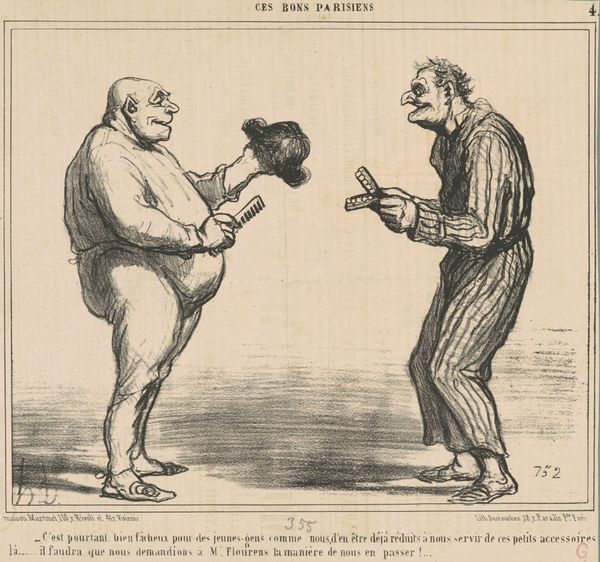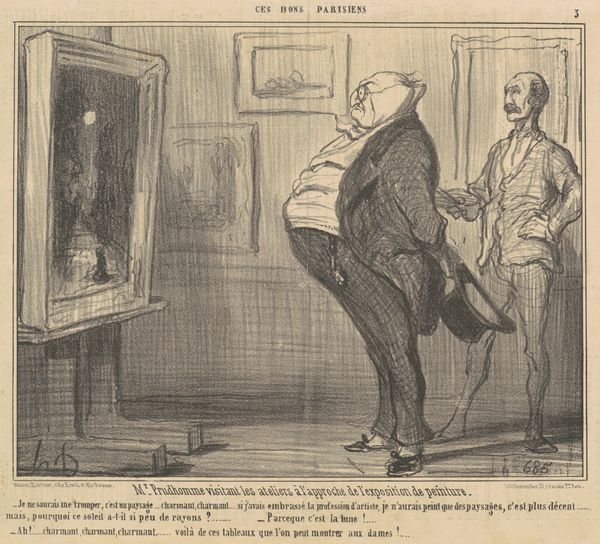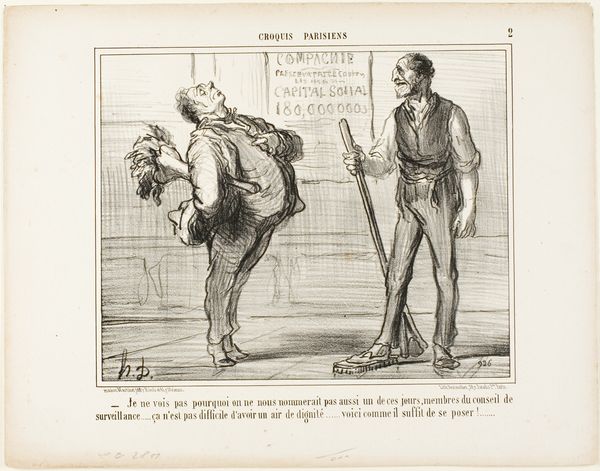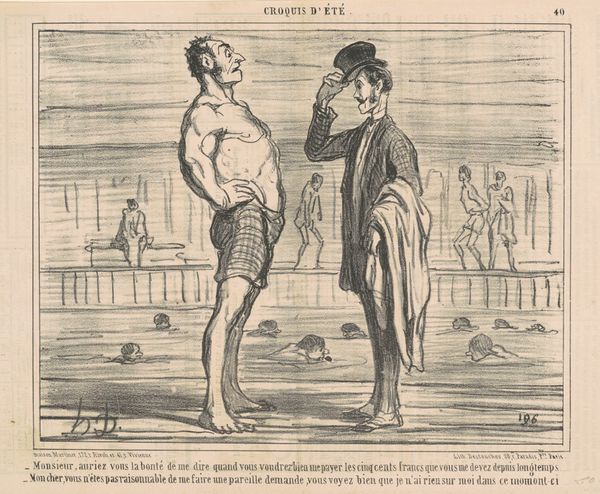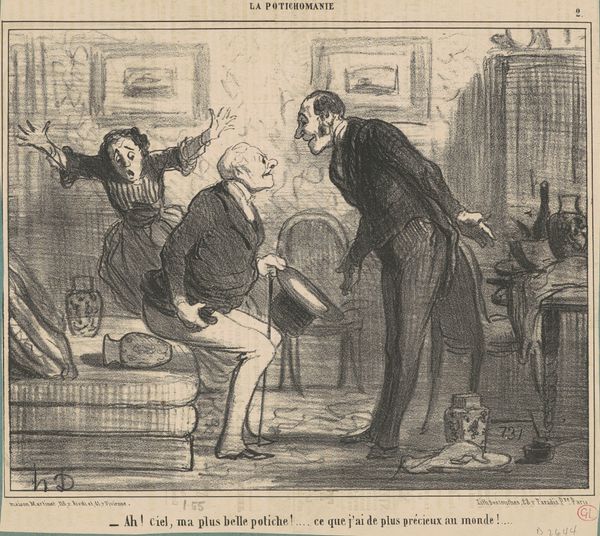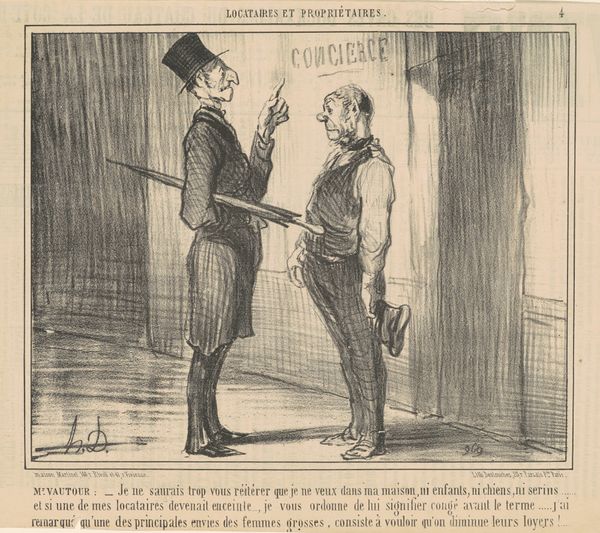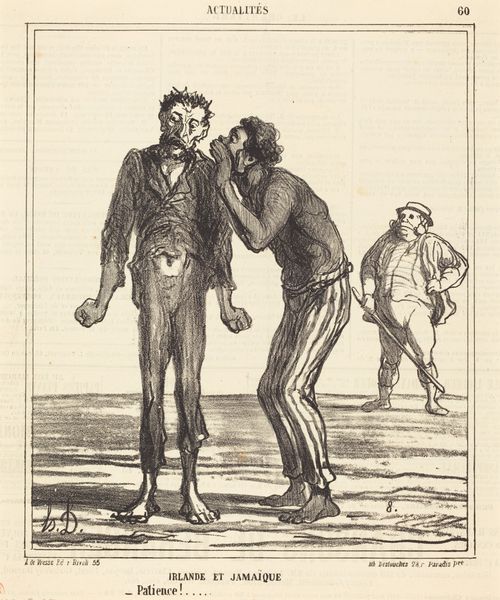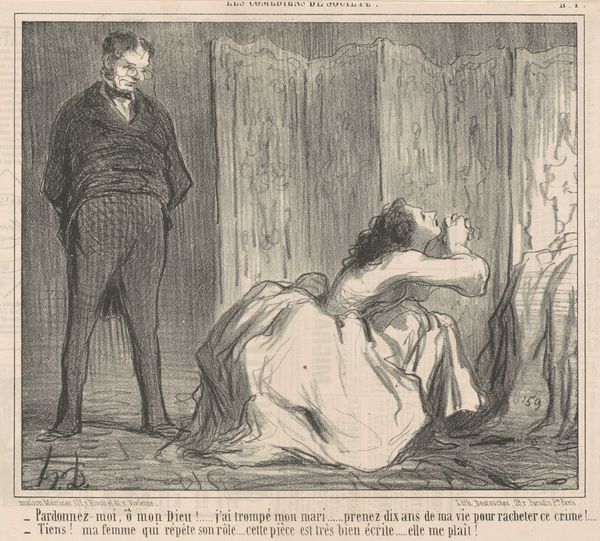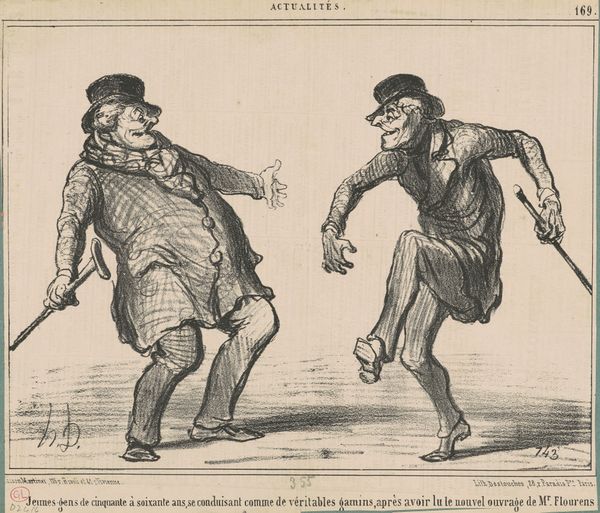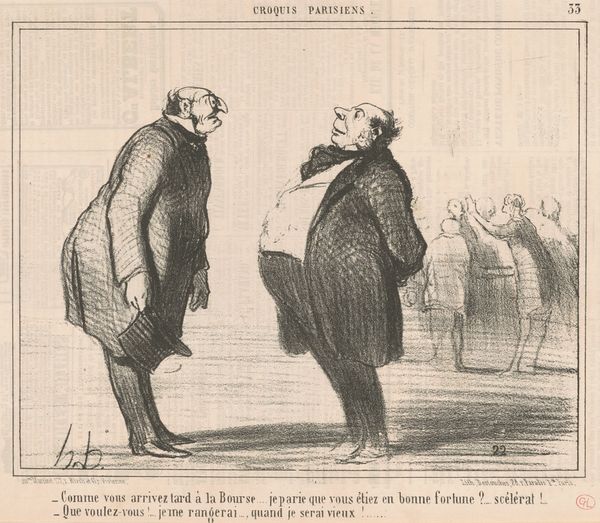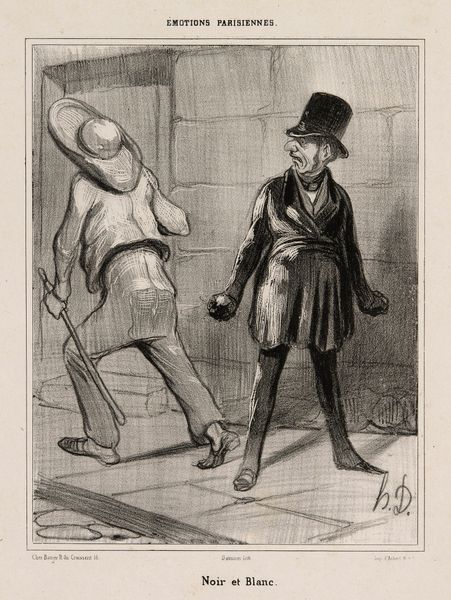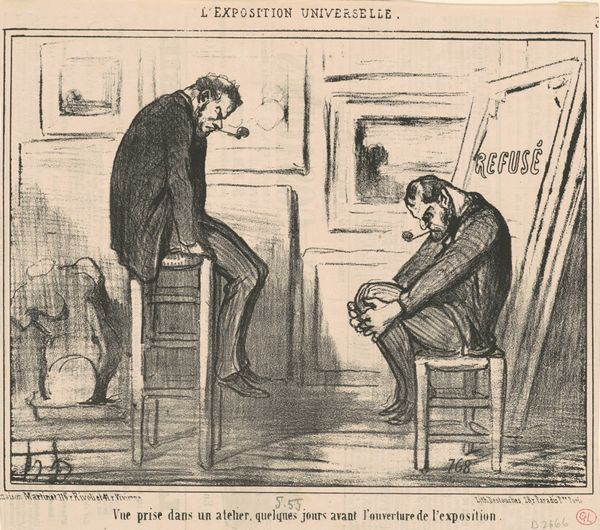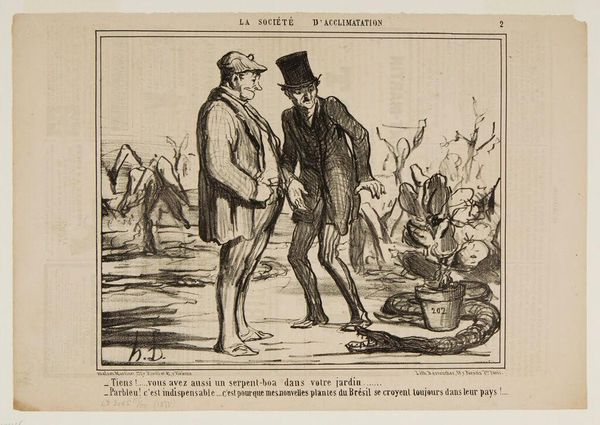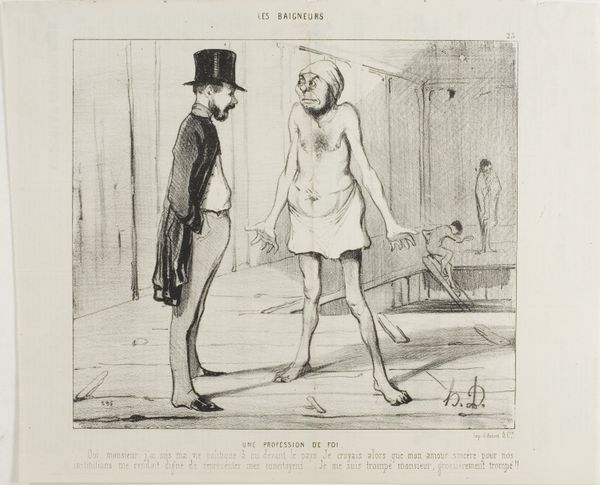
La personne ... demande a monter tout de suite ... c. 19th century
0:00
0:00
lithograph, print
#
lithograph
# print
#
caricature
#
romanticism
#
genre-painting
#
realism
Copyright: National Gallery of Art: CC0 1.0
Editor: This is "La personne ... demande a monter tout de suite ..." by Honoré Daumier, a lithograph print from around the 19th century. The stark black and white, coupled with the exaggerated figures, creates this immediate sense of social commentary. What's striking to me is how the physical appearances reflect the perceived social roles. What do you see in it? Curator: Focusing on the material aspects and their social context, notice the lithographic process itself, which allows for mass production of these images. Daumier wasn't creating unique artworks for a wealthy patron, but producing multiples intended for circulation amongst a broader public. The satirical content wouldn't reach this audience otherwise. Does the chosen medium impact your understanding of the image? Editor: Definitely. The use of printmaking makes it inherently more democratic than painting. Knowing that it was made to be distributed widely reshapes how I see its political intentions, right? It almost feels like propaganda! Curator: Precisely! And look at the specific marks made by the lithographic stone, the cross-hatching used for shading. This is not about illusionism, but about clear, reproducible marks meant to communicate a specific message. Daumier's labor and his access to that stone, that specific technology of image making, positions him critically within the political discourse of the time. Editor: So, rather than just seeing it as a funny caricature, we should really be looking at it as a carefully crafted tool for social critique using readily available and reproducible means. It shows the political reach and utility of common materials in 19th century art. Curator: Exactly. Examining the print in this way shifts our understanding from aesthetics to the practical application of art for political influence and gives rise to a critical interpretation that highlights the role and material choices of the artist in society.
Comments
No comments
Be the first to comment and join the conversation on the ultimate creative platform.
